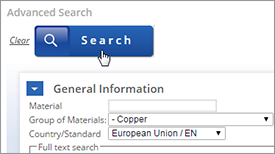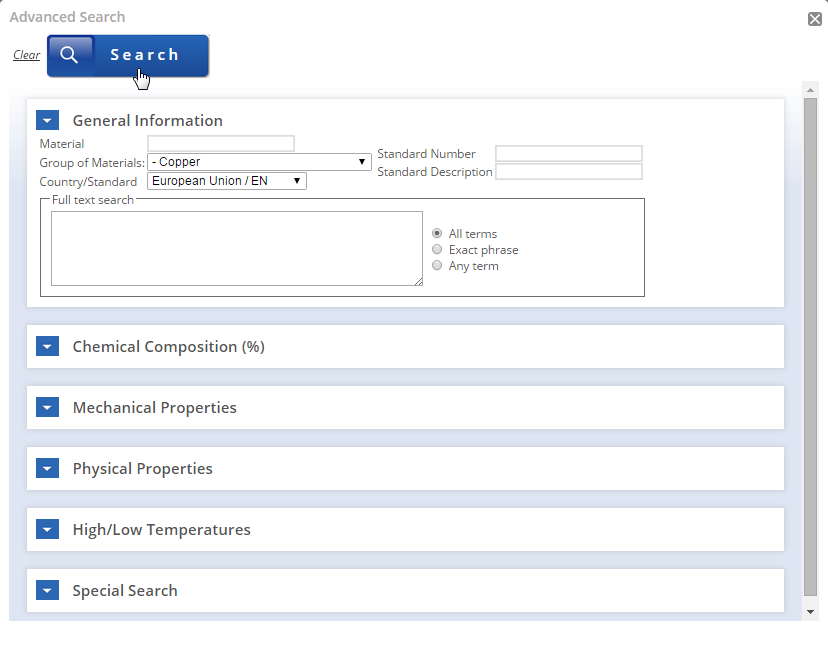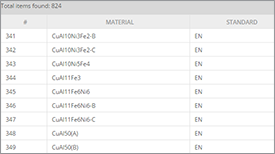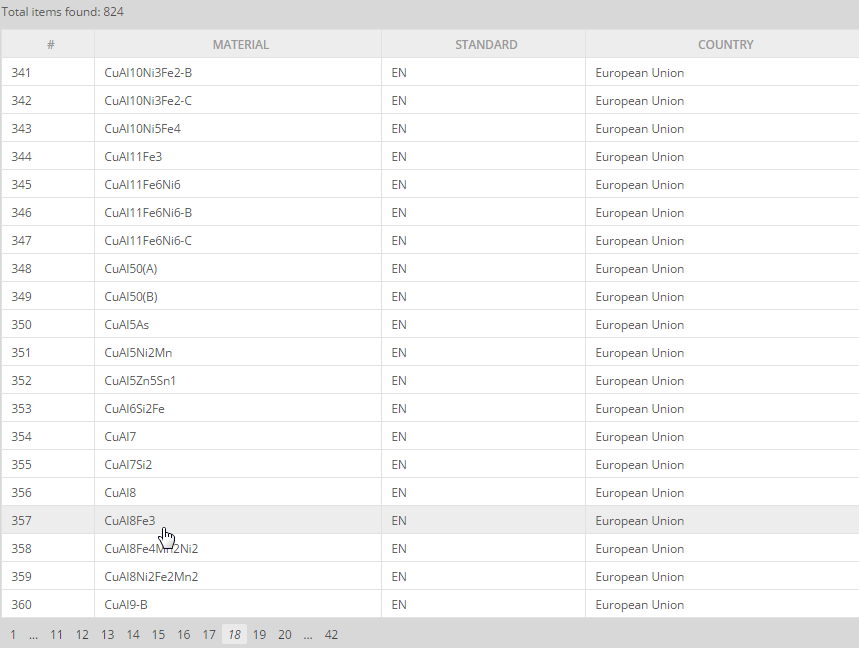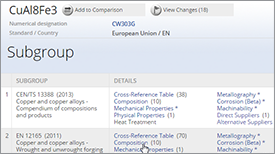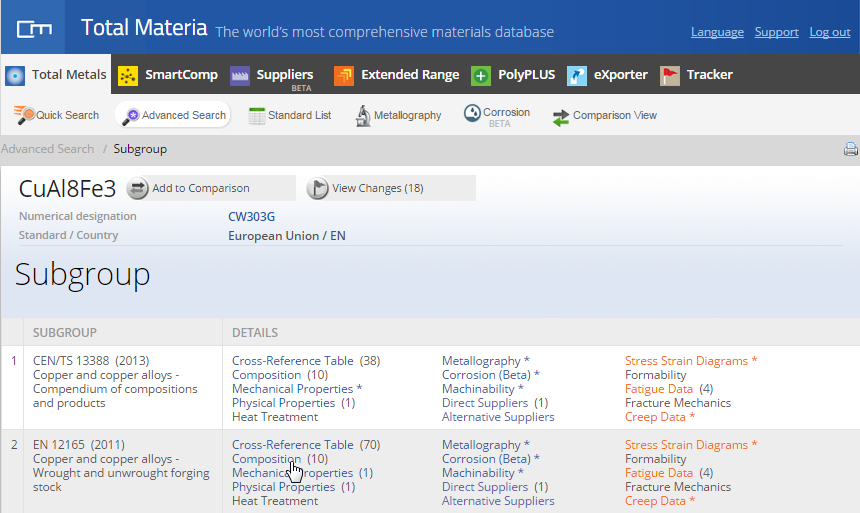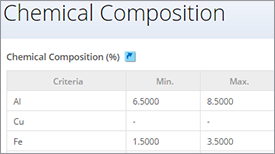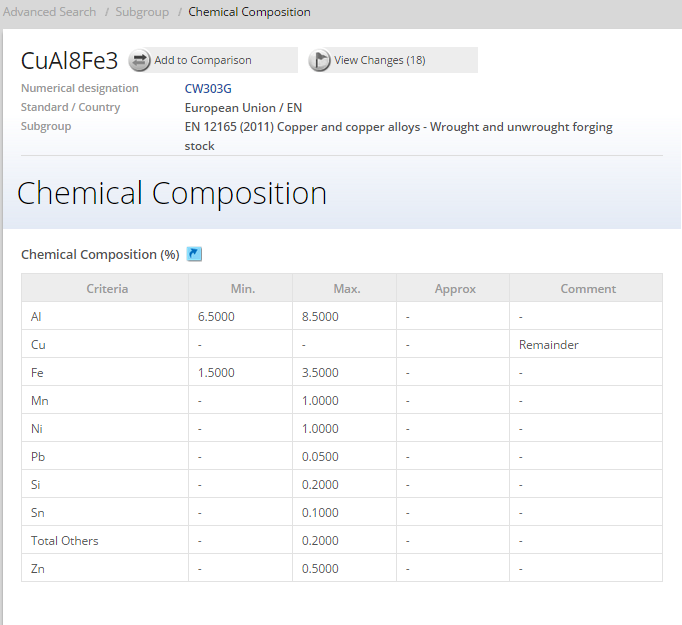- A matrix of copper with tin in solid solution, known as the alpha phase, which is comparatively soft
- A tin rich delta phase which is hard and interspersed throughout the matrix
- A hard constituent of copper phosphide associated with the delta constituent, which is also hard but brittle.
The phosphor bronzes can be sand cast, chill cast, continuously cast and centrifugally cast; they are largely used in the chill cast form, in which, owing to the quick cooling, the amounts of the hard constituents are increased and much more finely dispersed throughout the matrix than in the sand cast state giving an extremely tough and hard wearing alloy.
The grain structure of the chill cast and continuously cast alloy is not only finer than the sand cast alloy, but usually freer from porosity. The centrifugally cast alloy is usually sounder even than the chill cast alloy, equal in strength to it and higher in ductility.
The phosphor bronzes can be recommended for all services where toughness, wear resistance and hardness are required; they have good corrosion resistance to tap waters, mine waters, mild alkalis and petroleum derivatives. As their thermal and electrical conductivities are only a little inferior to the gunmetals, they are often useful when such properties are required because of their high mechanical strength.
The above properties make the phosphor bronzes very suitable for the following uses:
- Bearings and bushes subject to varying loads and duties, gear and worm wheels
- Parts for air compressors, aero engines, diesel engines
- Marine parts, generator and mining machinery, hoist fittings, piston rings, chemical pressure vessels, zinc free pump bodies, casings and impellers, acid resisting castings.
PB1C (B.S.1059, STA7-CP5): Sn min. 10.0%; P min. 0.50%
This is a very high grade phosphor bronze, free from zinc, with low lead (0.25% max.) which was originally introduced for use in the mines and was later developed for the aircraft industry as B8 and subsequently 2B8.It is used for gears, bearings and bushes for heavy loads and high duty with adequate lubrication, and for duty with hard steel shafts. Typical are bearings for aero engines, diesel engines, electrical generators and rolling mills. The alloy is also greatly used for gear and worm wheels, for pump parts particularly in mine waters and for marine work. The alloy can be chill cast, continuously cast, centrifugally cast and sand cast. For bearings and bushes a large amount is produced in the form of chill cast stick and continuously cast tubes and rods. For gears the alloy is mostly centrifugally, continuously or chill cast.
PB4C (SAE 65): Sn min. 9.5%; Pb max. 0.75%; Zn max. 0.5%; P min. 0.5%
For parts required for Air Ministry and Admiralty work of the highest quality, the alloy PB1 is necessary but where conditions are less onerous there is a place for an alloy of a similar type, but with a wider tolerance of impurities such as zinc, lead and nickel. To meet this need, the alloy PB4 has been introduced. The tin content is 0.5% lower than PB1 and lead is permitted up to 0.75% compared with 0.25% in PB1; zinc, which is absent from PB1, is permitted up to 0.5%.
PB2C (B.S.421, STA7-CP6, SAE 65): Sn=11.0-13.0%; Pb max. 0.50%; P min 0.15%
This alloy has a higher tin content than PB1 and lower phosphorus. It is tougher and therefore eminently suitable for gear and worm wheels which is its main use. It is resistant to shock and will stand heavy loading when used for bearing purposes. The alloy can be sand cast, chill cast, continuously cast and centrifugally cast.
PB3 (SAE65): Sn=8.0-11.0%; Pb max. 0.25%; P=0.10-0.40%
This alloy, which has a lower phosphorus content than PB1, is primarily intended for use as a zinc free copper-tin alloy for corrosion resistant and pressure tight castings. It has a very low impurity limit (0.30% excluding lead) and is used chiefly for chemical plant such as pressure vessels, pump bodies, casings and impellers.
LPB1C (B.S. 1061, STA7-CP3): Sn=6.5-8.5%; Pb=2.0-5.0%; P=min. 0.30%; Zn max. 2.0%; Ni max. 1.0%
This alloy has a lower tin and phosphorus content than PB1 and also contains up to 5% lead and may contain up to 2% of zinc and 1% of nickel. The lead is dispersed throughout the structure in fine globules. It is suitable for bearings and bushes for lighter duties, and due to the lead content, for use with limited lubrication. It is very easily machined.The alloy can be sand cast, chill cast and centrifugally cast; large quantities are used in chill cast stick form for various types of bearings and bushes; it is also used for plant not required to stand the rigorous duties.
